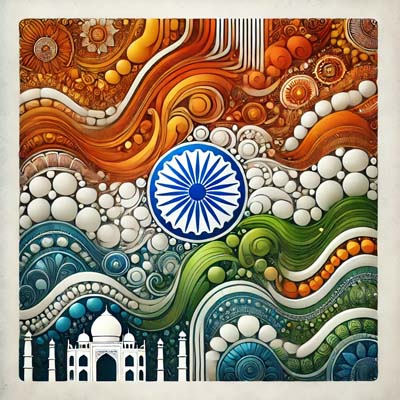India
Suicide Prevention Crisis Lines
- Primary Crisis Hotline:
- Phone Number: 9152987821 (Vandrevala Foundation Helpline)
- Hours of Operation: 24/7
- Additional Details: Free and confidential support in multiple Indian languages. (vandrevalafoundation.com)
- Youth Helpline:
- Phone Number: 1800 599 0019 (iCall for Mental Health)
- Hours of Operation: 9 AM – 9 PM, daily.
- Additional Details: Provides specialized mental health support for youth. (icallhelpline.org)
- Emergency Line:
- Phone Number: 112
- Notes: National emergency number for police, fire, and medical assistance, including mental health crises.
- LGBTQIA+ Hotline:
- Phone Number: 9886552366 (Sahodari LGBTQ+ Helpline)
- Hours of Operation: 24/7
- Additional Details: Offers mental health and crisis support for LGBTQIA+ individuals. (sahodari.org)

Epidemiology of Suicide
Overall Statistics
- Current Suicide Rate (per 100,000 people): 12.9 (2019 data). (org)
- Trend Analysis:
- Last 5 Years: India has seen fluctuations in suicide rates, with increasing numbers among youth, women, and farmers. Mental health awareness and crisis intervention efforts have expanded but remain inadequate in rural areas.
Demographic-Specific Insights
- By Gender:
- Male Suicide Rate: Higher than females, though the gap is smaller compared to global averages.
- Female Suicide Rate: One of the highest globally, often linked to domestic violence, social pressures, and economic dependence.
- By Age Groups:
- Adolescents (15–24): Suicide is the leading cause of death in this age group, linked to academic pressure, job insecurity, and mental health stigma.
- Elderly (60+): Suicide risk increases due to loneliness, chronic illness, and financial insecurity.
- Rural vs. Urban:
- Rural areas see higher suicide rates, especially among farmers facing economic distress, crop failure, and indebtedness.
- Special Groups:
- LGBTQIA+ Community: Higher rates of suicide due to discrimination, social exclusion, and lack of family support.
- Farmers: Suicide rates among farmers are disproportionately high, often linked to financial hardship and agrarian distress.
- Students: Exam-related stress and high parental expectations contribute to significant suicide rates among students.
Suicide Prevention Innovations
National Strategies and Policies
- Overview: The Indian government launched the National Suicide Prevention Strategy in 2022, aiming for a 10% reduction in suicide rates by 2030.
- Key Elements:
- Strengthening mental health services through the National Mental Health Programme (NMHP).
- Expanding crisis helplines and online support platforms.
- Addressing suicide risk factors through economic relief for farmers and student mental health programs.
Specific Initiatives and Campaigns
- Public Awareness Campaigns:
- Example: “It’s Okay to Talk” campaign encourages open conversations about mental health and suicide prevention.
- Programs Targeting High-Risk Groups:
- Student Support: Helplines and workshops for stress management.
- Farmer Support: Loan waivers and economic relief programs to reduce agrarian distress.
- LGBTQIA+ Inclusion: Awareness initiatives to promote acceptance and mental health support.
- Collaborative Efforts:
- Government partnerships with NGOs such as Snehi, Snehi Foundation, and iCall to improve access to mental health services.
Innovative Tools and Approaches
- Digital Tools:
- Mental health apps like “Mind U” and “Arogya Setu” integrate mental health resources with AI-driven interventions.
- Online therapy and text-based crisis support through platforms like YourDOST and BetterLyf.
- Community-Based Interventions:
- Gatekeeper Training: Educating teachers, community leaders, and police on identifying and assisting individuals at risk.
- Mental Health Ambassadors: Trained volunteers providing support in rural communities.
Additional Insights
- Cultural Considerations:
- Mental health stigma is deeply rooted in Indian society, often discouraging individuals from seeking help.
- Suicide is still criminalized under Section 309 of the Indian Penal Code, although efforts are being made to decriminalize and treat it as a health issue.
- Research and Data Gaps:
- Suicide data for marginalized communities, such as LGBTQIA+ and tribal populations, is underreported and needs further research.
- Positive Developments:
- Increased policy focus on mental health, digital solutions, and suicide prevention strategies signal progress in reducing suicide rates.
References
- Ministry of Health and Family Welfare, India. (2022). National Suicide Prevention Strategy. Retrieved from https://www.mohfw.gov.in/
- World Bank. (2019). India – Suicide Mortality Rate (per 100,000 Population). Retrieved from https://data.worldbank.org/
- World Health Organization. (n.d.). Mental Health and Suicide Prevention in India. Retrieved from https://www.who.int/
- Snehi Foundation. (n.d.). Suicide Prevention Helpline Services in India. Retrieved from https://snehi.org/
- Sahodari Foundation. (n.d.). LGBTQIA+ Suicide Prevention and Mental Health Support. Retrieved from https://www.sahodari.org/
- Vandrevala Foundation. (n.d.). Crisis Helpline and Suicide Prevention Initiatives. Retrieved from https://www.vandrevalafoundation.com/
